Imagine stepping into your backyard and instantly feeling a wave of tranquility and comfort, no matter the season. Whether you’re just starting your outdoor journey or you’re a seasoned backyard enthusiast, “14 Outdoor Comfort Ideas for Your Next Project” is your go-to guide for transforming your space into a personal oasis. With each idea tailored to boost both aesthetics and functionality, you’ll discover how to make your outdoor living areas as inviting and cozy as your favorite indoor room.
These carefully curated ideas promise more than just visual appeal; they’re about crafting a lifestyle where outdoor moments become cherished memories. From creating lush lounges to setting up intimate dining nooks, this guide equips you with practical, easy-to-implement solutions that will elevate your outdoor experience. Dive in with confidence and see how simple tweaks can lead to extraordinary transformations, making your outdoor dreams a tangible reality.
Incorporate Adjustable Shade Solutions
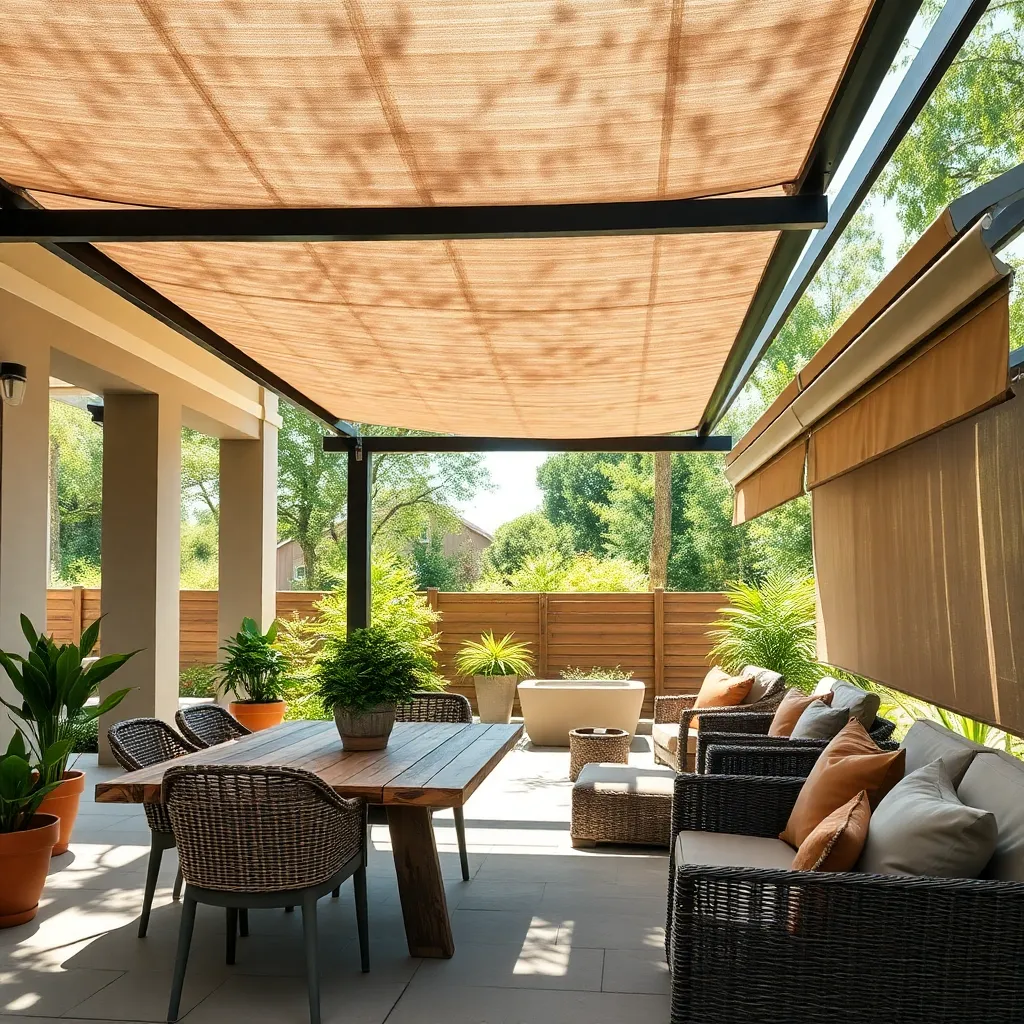
Enhancing your outdoor space with adjustable shade solutions can significantly increase comfort and usability. Consider installing retractable awnings, which provide flexibility to adjust shade based on the time of day or weather conditions. Opt for materials like UV-resistant fabric or durable aluminum to ensure longevity. For beginners, a simple retractable umbrella can offer a quick and effective solution. Advanced homeowners might consider motorized pergolas, which allow for precise control over light and shade with just the touch of a button.
When incorporating adjustable shade, it’s essential to consider the position and dimensions of your outdoor area. Measure your space carefully to ensure a seamless fit of your chosen shade solution. For maximum effectiveness, aim to cover high-traffic areas like outdoor dining or seating zones. To maintain a cohesive aesthetic, match the color and style of your shade structures with existing outdoor decor. For those seeking an eco-friendly option, solar-powered shades offer the added benefit of energy efficiency.
Install Durable Weatherproof Seating
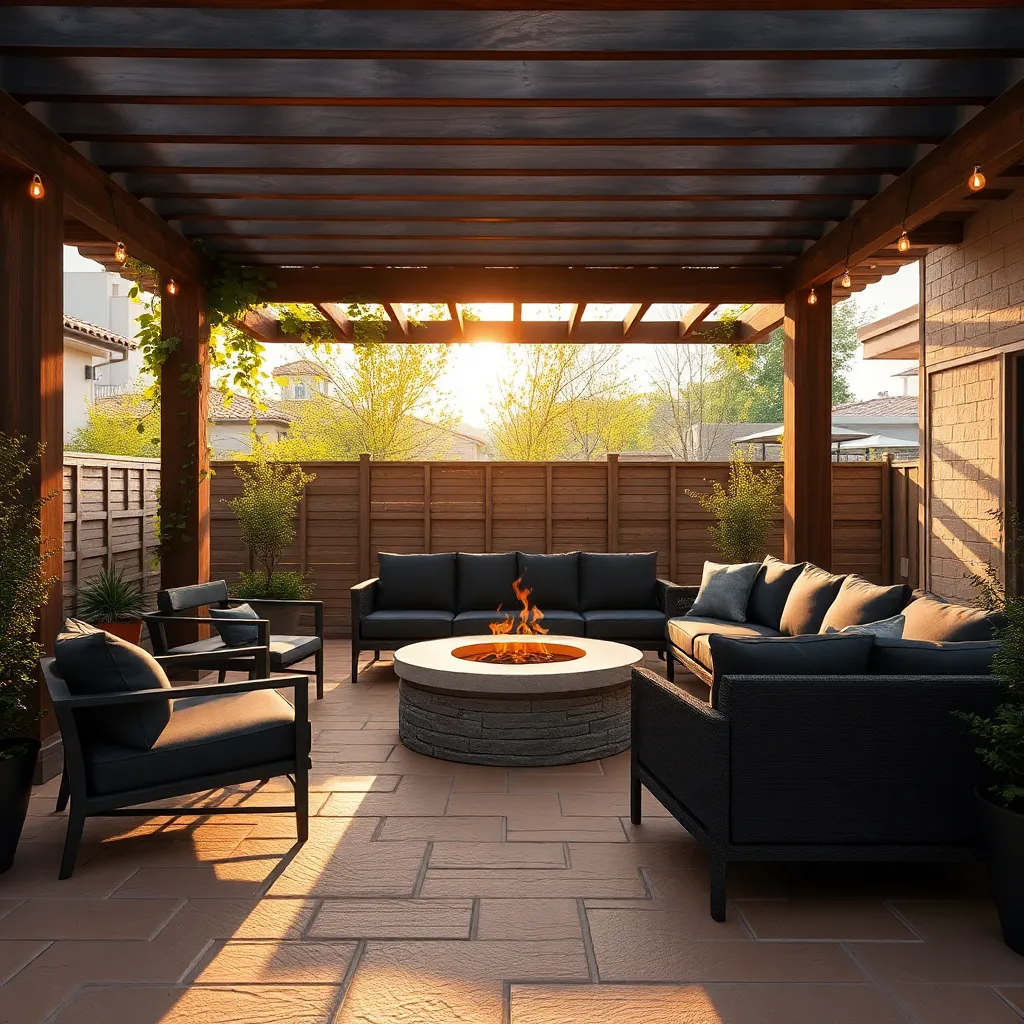
To enhance your outdoor comfort, consider installing durable weatherproof seating that can withstand the elements. Opt for materials like teak, eucalyptus, or powder-coated aluminum, which are known for their resilience and low maintenance. For a beginner-friendly project, start with ready-made options that are easy to assemble and require minimal tools. Ensure the seating is placed on a stable surface, such as a concrete patio or a deck, to prevent tipping and to maintain longevity.
Incorporate cushions covered in UV-resistant and waterproof fabrics to add both comfort and style. For those looking to personalize their space, consider building custom benches using composite decking materials, which combine the beauty of wood with enhanced durability. Advanced DIY enthusiasts might enjoy adding built-in storage under seating for practicality, ensuring the dimensions fit your space perfectly—typically, a seat height of 18 inches is comfortable. These thoughtful additions not only make your space inviting but also extend the usability of your outdoor area throughout the seasons.
Create Privacy With Natural Screens
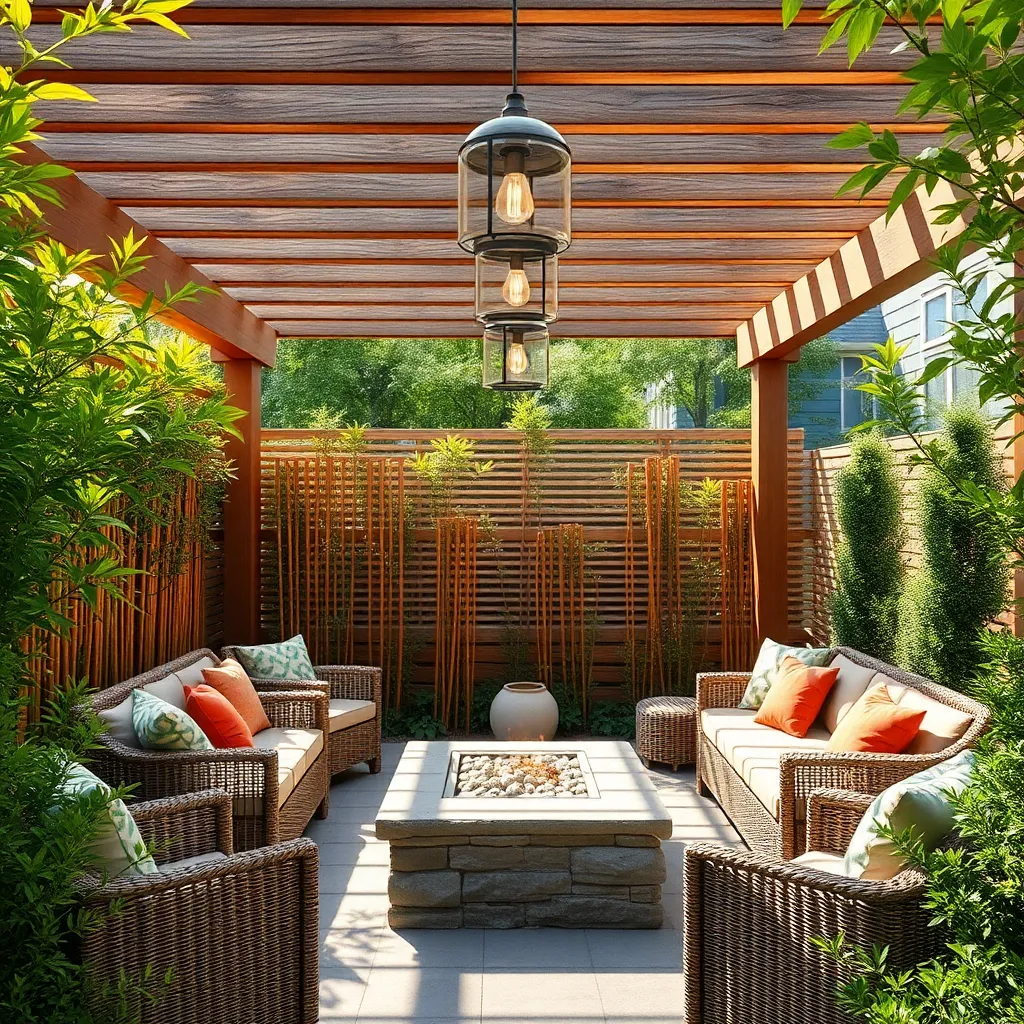
Transform your outdoor space into a private oasis by incorporating natural screens. Consider planting fast-growing trees like bamboo or Leyland cypress to create a living barrier that offers both privacy and aesthetic appeal. For a more immediate effect, install trellises or pergolas and train climbing plants such as wisteria or clematis to weave through them, providing lush coverage. These options not only block unwanted views but also add a touch of greenery and texture to your garden design.
When planning your natural screen, consider the height and density you need for effective privacy. For those with limited space, vertical garden walls using planter boxes can provide a compact yet effective solution. Choose hardy, evergreen plants that thrive in your climate to ensure year-round coverage. Remember to space plants according to their mature size to avoid overcrowding and allow for healthy growth. With thoughtful selection and placement, natural screens can seamlessly integrate into your landscape while enhancing your outdoor comfort.
Add Cozy Outdoor Fire Features
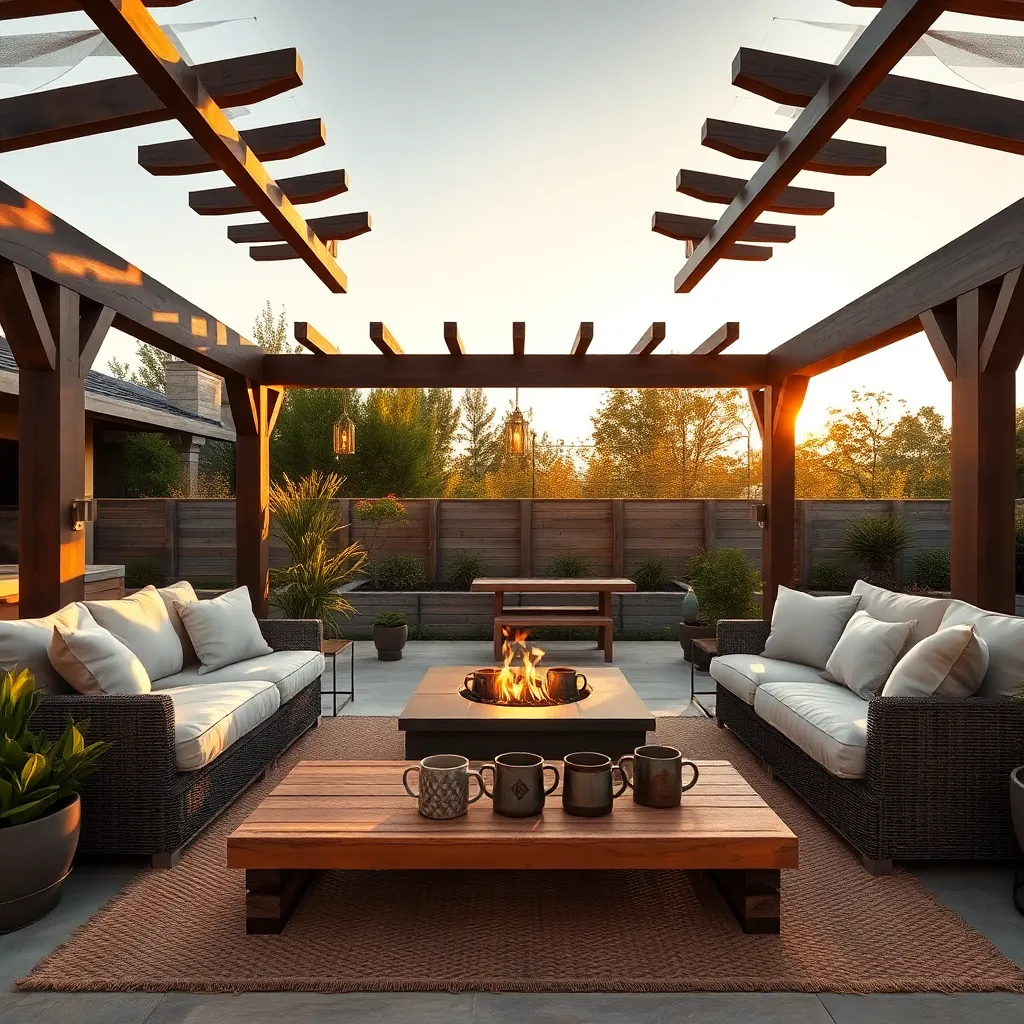
Adding cozy outdoor fire features can instantly transform your backyard into a warm and inviting haven. For beginners, a simple fire pit is a great starting point—consider a pre-made steel or cast-iron model that offers durability and easy installation. Position your fire feature on a sturdy, non-flammable surface like a gravel or stone patio, and ensure it’s at least 10 feet away from any structures or trees for safety. For a more customized touch, try building your own fire pit using natural stone or brick, which can be tailored to fit your outdoor aesthetic.
For a more advanced project, consider installing an outdoor fireplace, which can serve as a stunning focal point. Materials like stone or brick can withstand high temperatures and weather conditions, making them ideal choices for construction. Incorporate seating around your fire feature by arranging weather-resistant furniture or built-in benches, ensuring guests can comfortably enjoy the warmth. To enhance the ambiance, use LED lighting or lanterns to subtly illuminate the area, creating a perfect setting for evening gatherings.
Use Water-Resistant Cushions and Fabrics
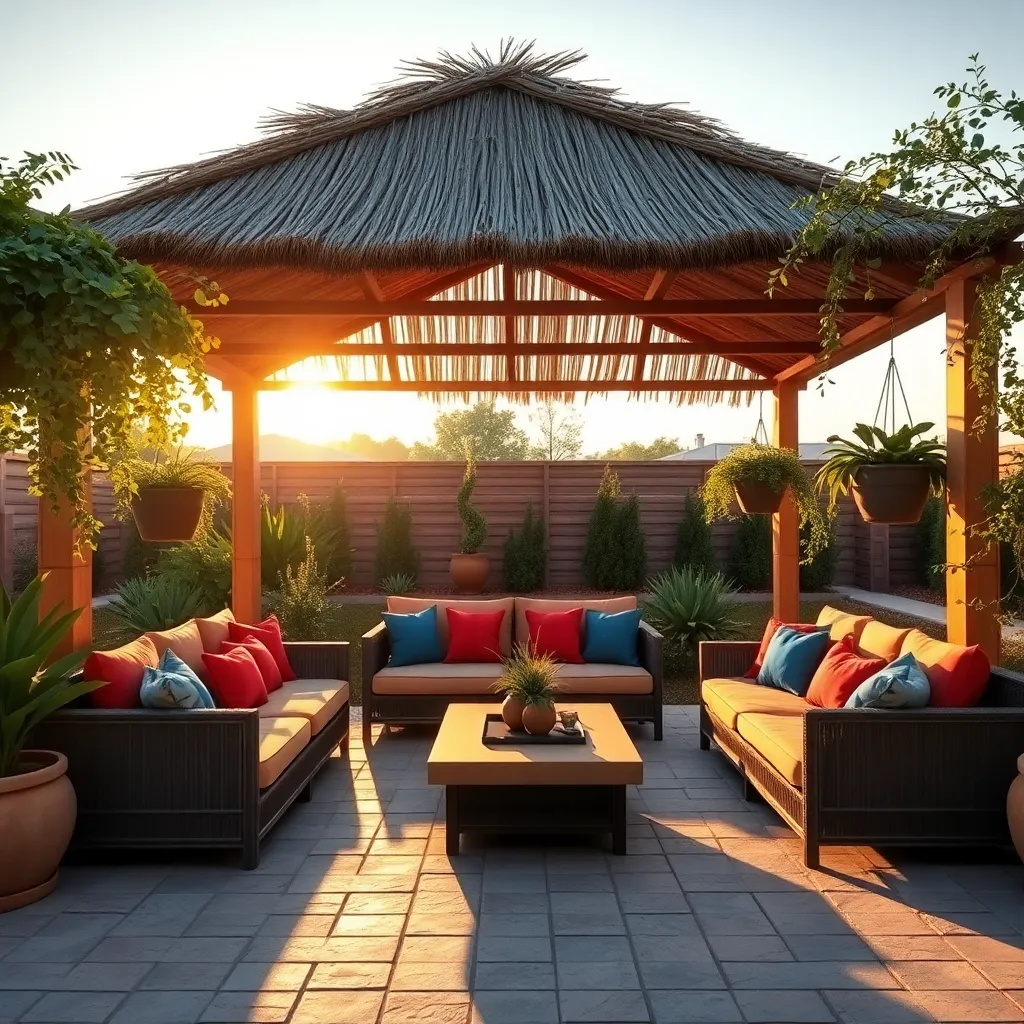
To ensure your outdoor seating remains comfortable and inviting regardless of the weather, it’s essential to invest in water-resistant cushions and fabrics. Choose materials like solution-dyed acrylics or polyester that are known for their durability and resistance to moisture. These materials not only withstand rain and humidity but also resist fading from UV exposure, ensuring your outdoor space stays vibrant and welcoming season after season.
For those looking to elevate their outdoor comforts, consider custom-made cushions that fit your specific furniture dimensions for a tailored look. Adding a layer of protection, such as a breathable waterproof cover, can extend the life of your cushions significantly. For a touch of luxury, opt for quick-drying foam inserts, which prevent mildew buildup and maintain shape even after heavy rains. This combination of thoughtful material choice and smart design ensures your outdoor retreat is always ready for relaxation, no matter the weather.
Design Multi-Season Shelter Options
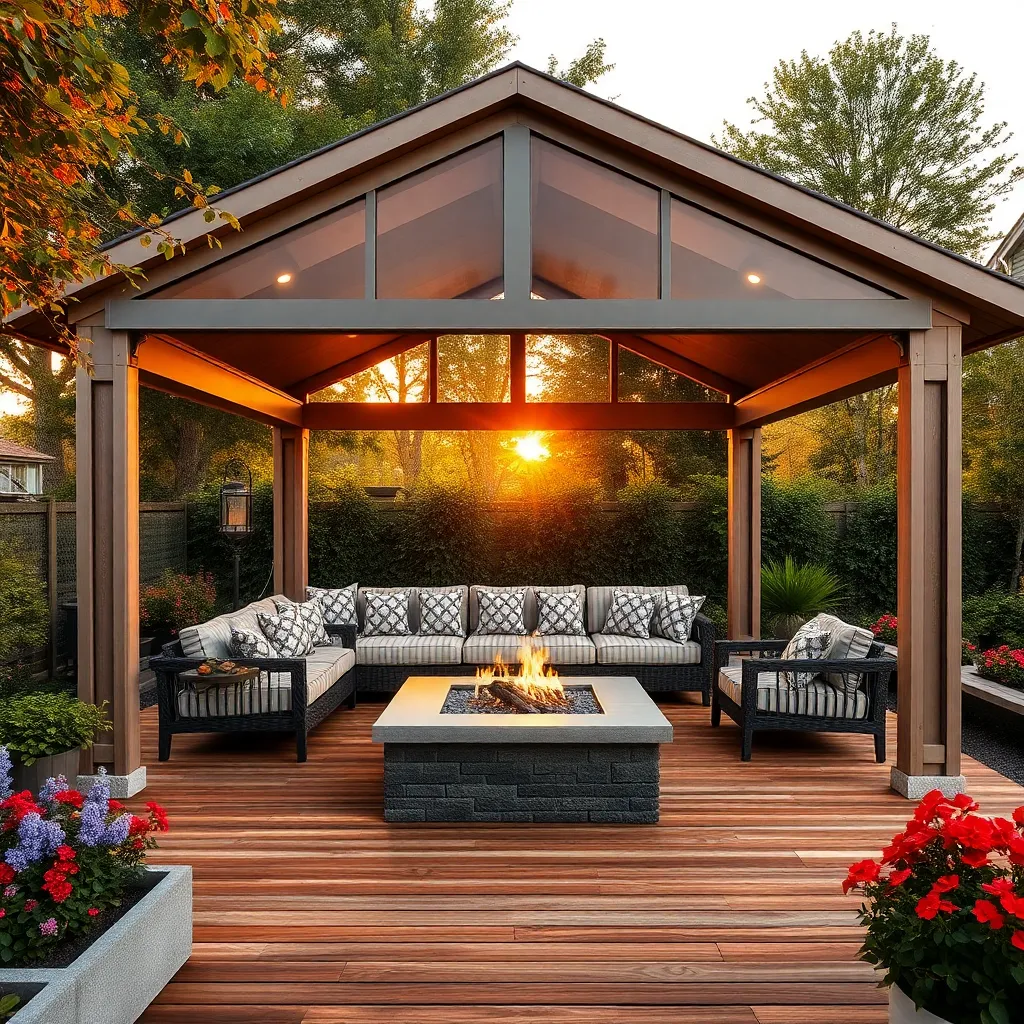
For a multi-season outdoor shelter, focus on choosing materials that offer both durability and adaptability. Consider using a combination of wood and metal for the frame, as they provide strength and longevity. Opt for adjustable, retractable roofs made from materials like polycarbonate or UV-resistant fabric to manage sunlight and rain effectively. Incorporate elements like removable side panels or curtains that can shield against wind or cold, offering flexibility throughout the year.
Design your shelter with key features such as integrated heating and lighting to enhance comfort in cooler months. Install outdoor-rated ceiling fans to improve air circulation during warmer seasons. For a beginner-friendly approach, consider a simple pergola with a climbing plant canopy, which provides natural shade and a touch of green. Advanced DIYers might explore building a gazebo with built-in storage for seasonal accessories, ensuring everything is within reach and easily adaptable to changing weather. Embrace these strategies to create a versatile outdoor retreat that invites year-round enjoyment.
Install Efficient Outdoor Heating Systems
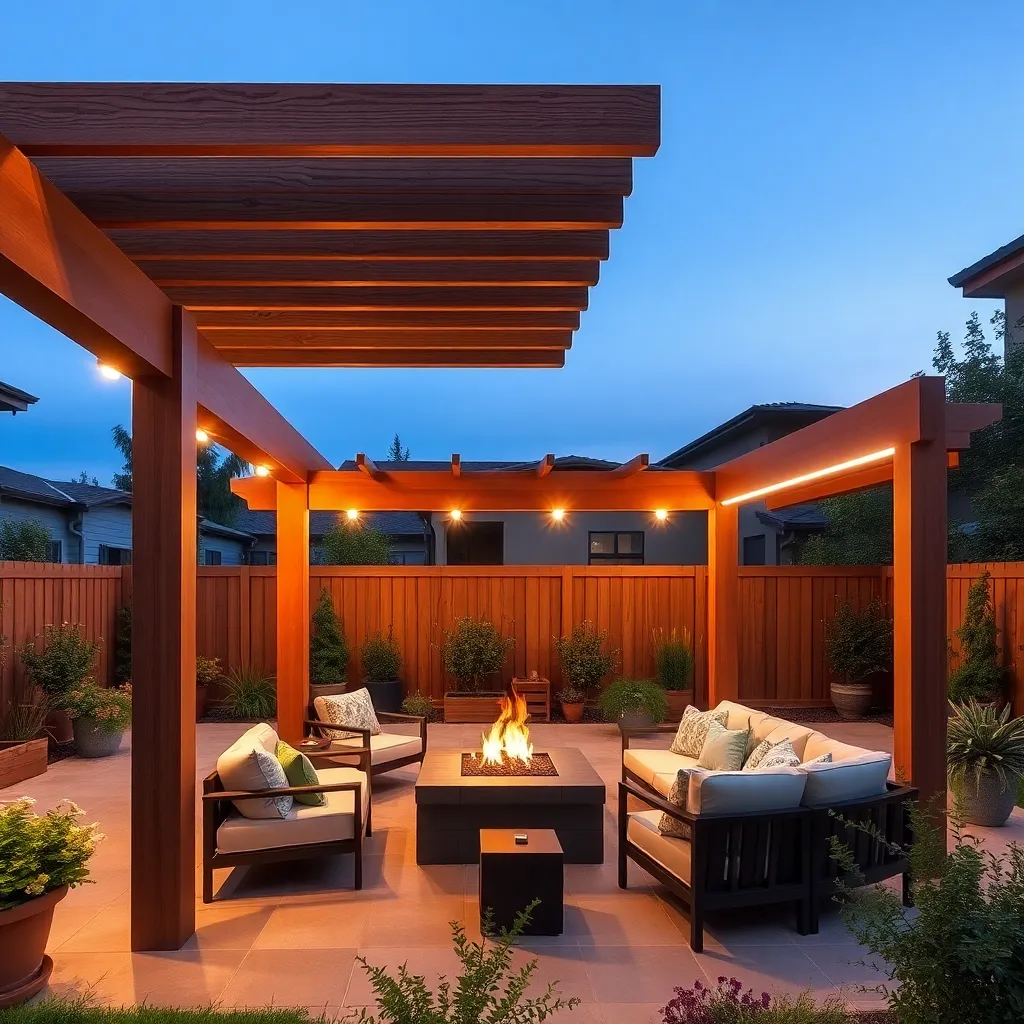
Installing an efficient outdoor heating system can significantly extend the usability of your outdoor space, making it comfortable even in cooler months. Begin by selecting a heating option that suits your layout and climate, such as electric or gas-powered patio heaters. For a basic setup, consider freestanding or wall-mounted models, which are easy to integrate without major construction. Ensure proper clearance and positioning to maximize heat distribution and safety, typically requiring at least 30 inches of space from flammable materials.
For those seeking a more integrated solution, radiant heating systems installed under flooring or in ceilings can provide consistent warmth. These systems are ideal for covered patios or pergolas, where they can be seamlessly incorporated during the design phase. Choose materials like aluminum or stainless steel for heating elements, as they are durable and weather-resistant. Advanced users might explore smart heating systems that allow remote control via smartphone apps, offering convenience and energy efficiency. Whether opting for simple or sophisticated, a well-planned heating system ensures your outdoor shelter is a cozy retreat year-round.
Select Wind-Resistant Structures
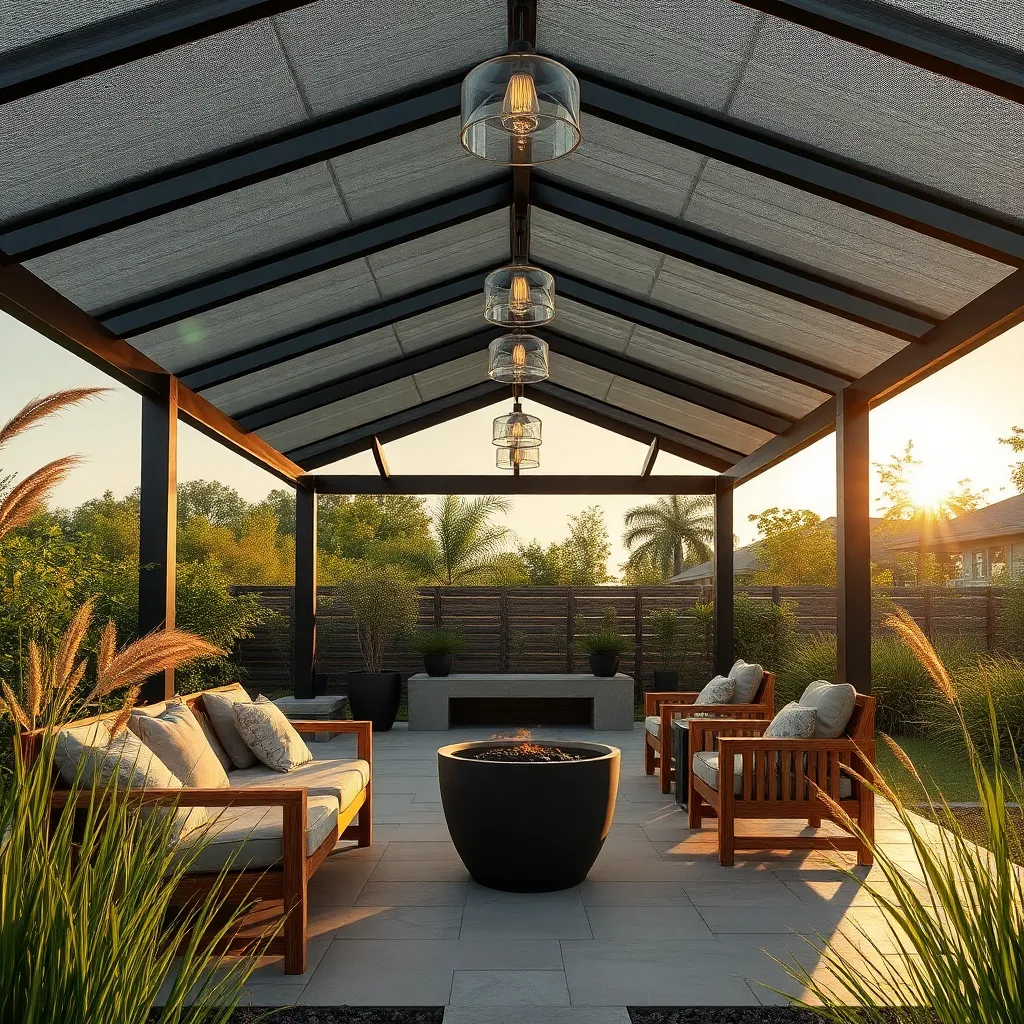
When selecting wind-resistant structures for your outdoor space, prioritize durable materials like steel, aluminum, or reinforced wood that can withstand high winds. Consider opting for pergolas or gazebos with open slats in the roof design, which allow wind to pass through and reduce pressure on the structure. For added stability, secure the posts deep into the ground using concrete footings, ensuring your shelter is both sturdy and reliable in various weather conditions.
Incorporate design features such as angled or slatted walls to deflect wind and provide additional protection for your outdoor area. For those with advanced DIY skills, adding retractable screens or shutters can offer flexibility, allowing you to adjust the level of exposure depending on the wind conditions. To enhance both function and aesthetics, consider a mix of materials like tempered glass or polycarbonate panels that offer visibility while shielding against gusts.
Utilize Retractable Awnings for Flexibility
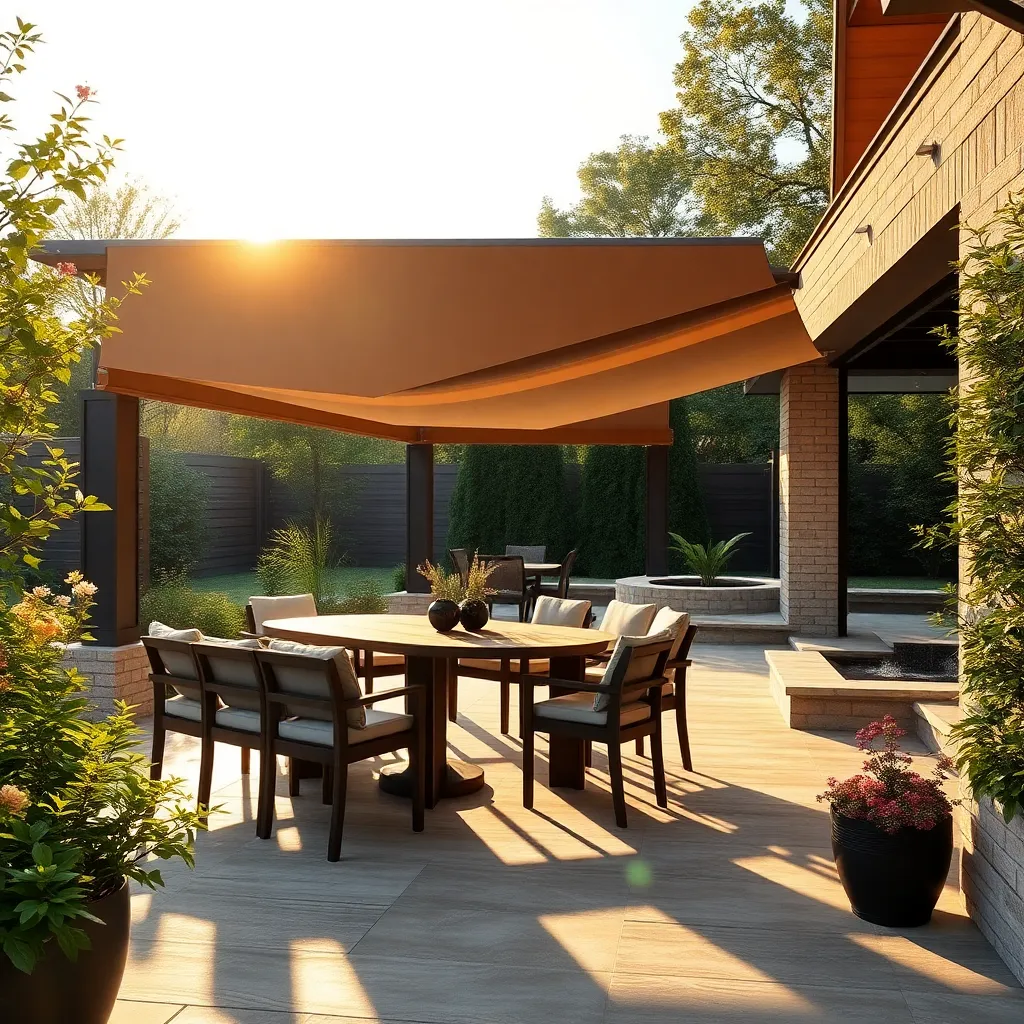
For those seeking flexibility in their outdoor spaces, retractable awnings offer a versatile solution. They allow you to easily adjust the amount of shade or sun exposure based on the weather or time of day. These awnings are available in various materials, such as durable acrylic or polyester fabrics, which are both resistant to fading and mildew. Consider motorized options for effortless operation, especially if you have larger areas to cover, and ensure the awning is installed with a slight pitch to allow rainwater to run off easily.
When incorporating retractable awnings into your design, measure the area accurately to ensure proper fit and function. Awnings typically extend between 5 to 20 feet, so choosing the right size is crucial for optimal coverage. For beginners, consulting with a professional installer can help navigate the complexities of installation and ensure a secure setup. Advanced users might explore integrating smart home technology to automate the extension and retraction based on weather conditions, adding both convenience and efficiency to your outdoor experience.
Integrate Built-In Storage Solutions
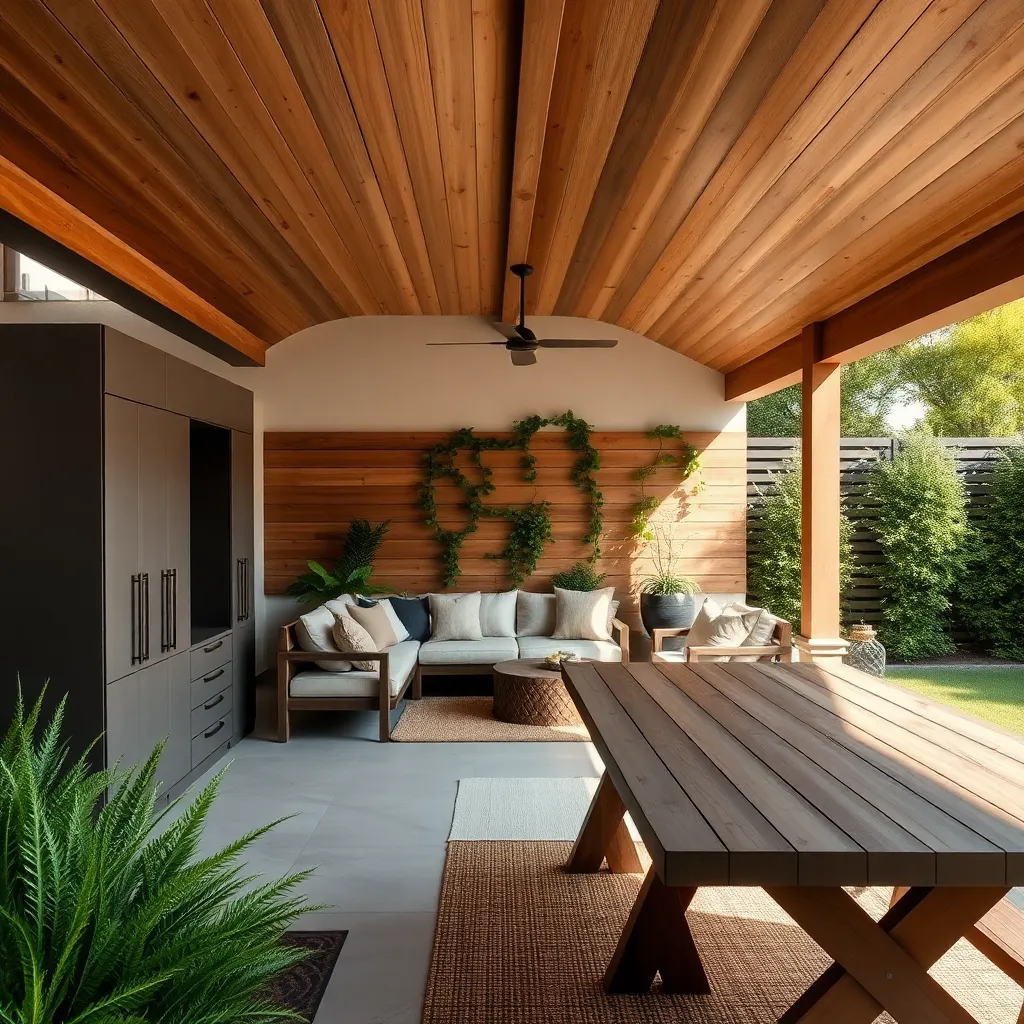
Incorporating built-in storage solutions into your outdoor shelter not only maximizes space but also enhances functionality. Consider using weather-resistant materials such as treated wood, metal, or high-density polyethylene for durability. These materials withstand the elements while maintaining a sleek appearance. Beginners can start with simple storage benches, which offer seating and space for storing cushions or gardening tools. For a more advanced project, design custom cabinetry that can be integrated into structural elements, like posts or walls, for a seamless look.
To make the most of your storage, ensure that it is both accessible and strategically placed. Utilize vertical space by adding shelves or hooks inside these storage units for organizing smaller items. For an efficient layout, plan your storage to be near high-use areas, such as a grill or dining space, so essentials are always within reach. Incorporating locks or latches can help keep items secure and protected from weather conditions. With thoughtful planning and design, these solutions can transform your outdoor shelter into a well-organized and stylish retreat.
Maximize Space With Vertical Gardens
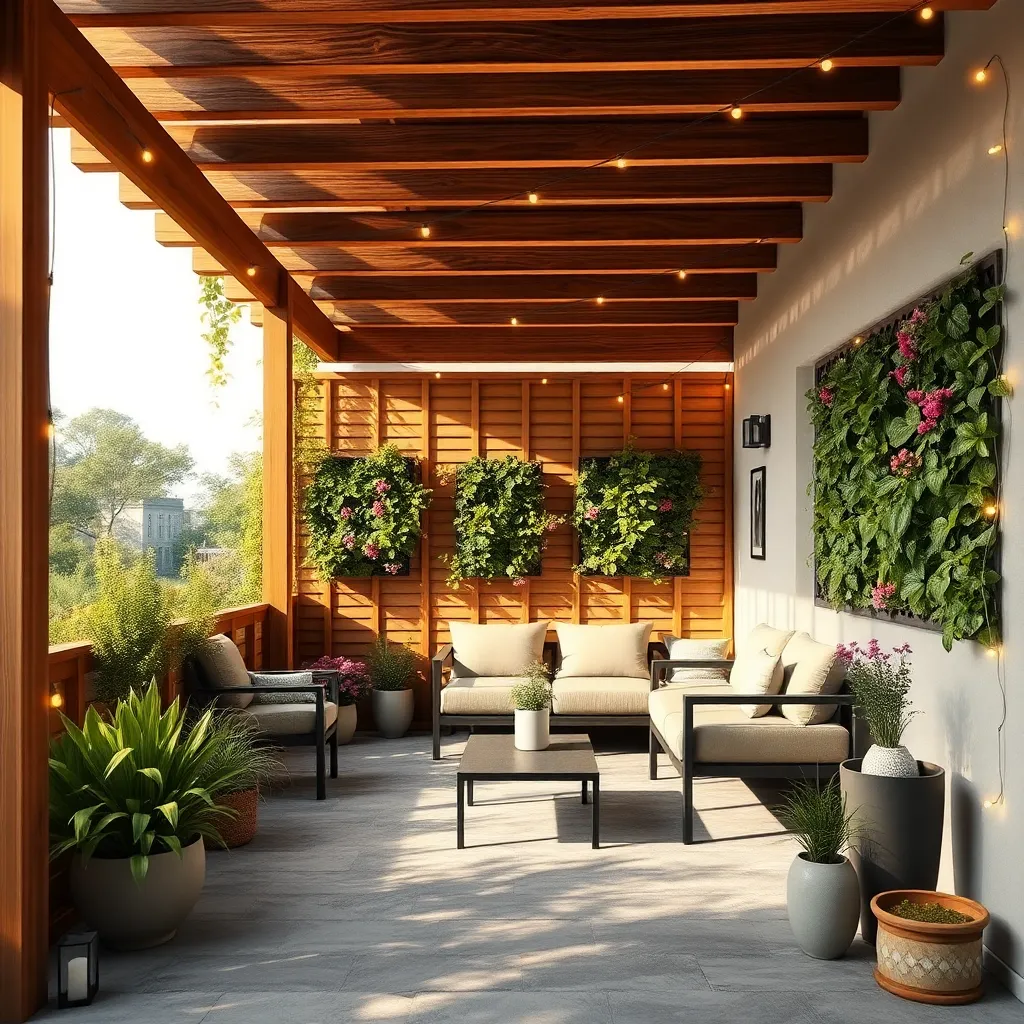
Vertical gardens are a fantastic way to maximize outdoor space while adding a lush, green aesthetic to your garden. For beginners, consider using pre-made vertical planters that can be mounted on walls or fences. These come in materials like wood or metal and often include pockets or troughs for planting. To get started, choose a sunny wall and secure your planter using weather-resistant hooks or brackets. This setup not only saves ground space but also brings plants to eye level, making maintenance easier and more enjoyable.
For those looking to elevate their vertical garden game, design a custom trellis using durable materials such as cedar or treated lumber. This allows for more flexibility in plant choices, from climbing roses to fresh herbs. Ensure your structure is sturdy enough to support the weight of mature plants and provide adequate soil depth for root growth. Advanced gardeners can incorporate irrigation systems to keep plants hydrated without manual watering, making the garden both efficient and sustainable. Whether you’re a novice or a seasoned gardener, vertical gardens offer a beautiful, space-saving solution for any outdoor area.
Opt for Sustainable Building Materials
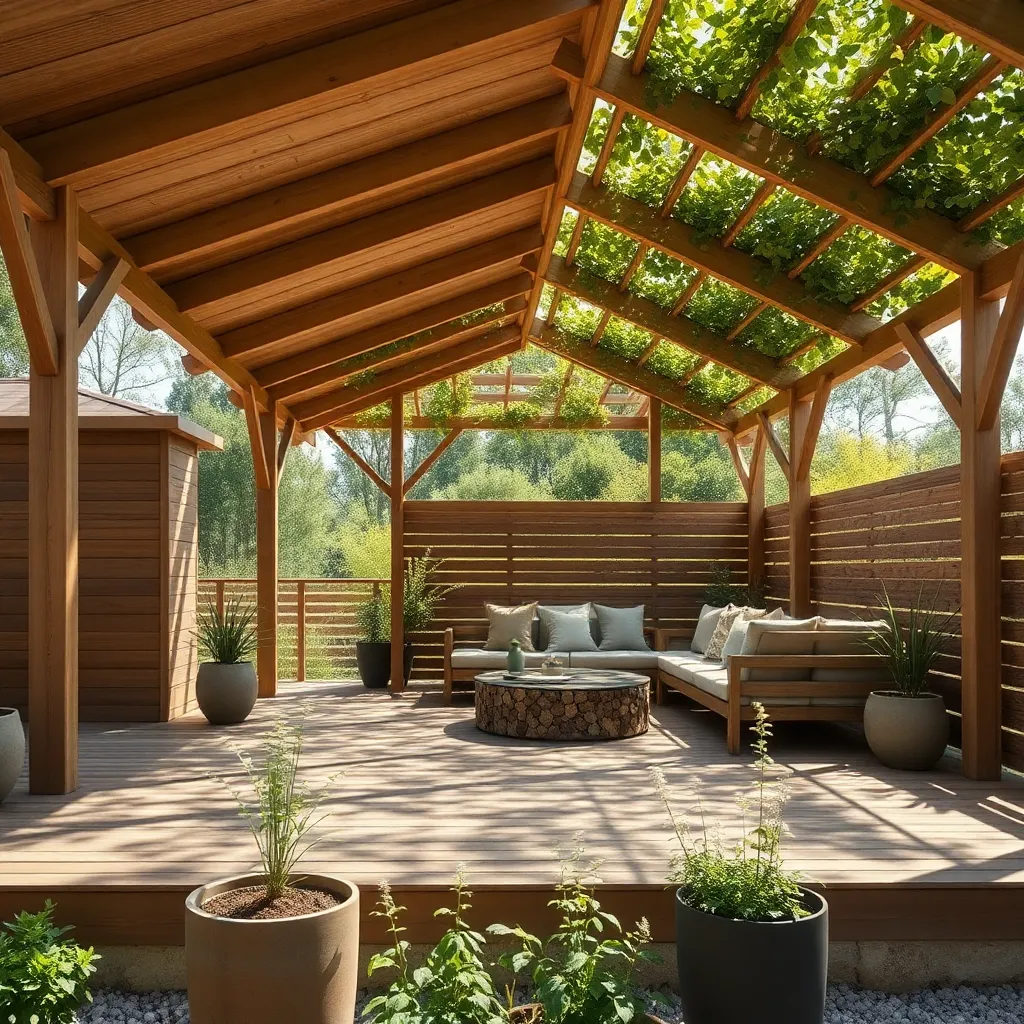
Choosing sustainable building materials for your outdoor shelter not only benefits the environment but also ensures durability and aesthetics. Bamboo and reclaimed wood are excellent choices, offering strength and a natural look. For a sleek, modern design, consider using recycled metal or composite materials, which are both eco-friendly and long-lasting. Beginners can start with simple post-and-beam construction, while those with more experience might explore advanced techniques like green roofing or rainwater collection systems integrated into the shelter design.
Incorporating sustainable elements doesn’t mean compromising on style or comfort. Opt for natural finishes and non-toxic sealants to maintain the integrity of the materials while providing a safe environment. To enhance the shelter’s functionality, consider adding solar panels to power lighting or small appliances, reducing reliance on traditional energy sources. Remember, the key is to balance aesthetics and sustainability, creating a space that is both beautiful and environmentally responsible.
Embed Solar-Powered Lighting Fixtures
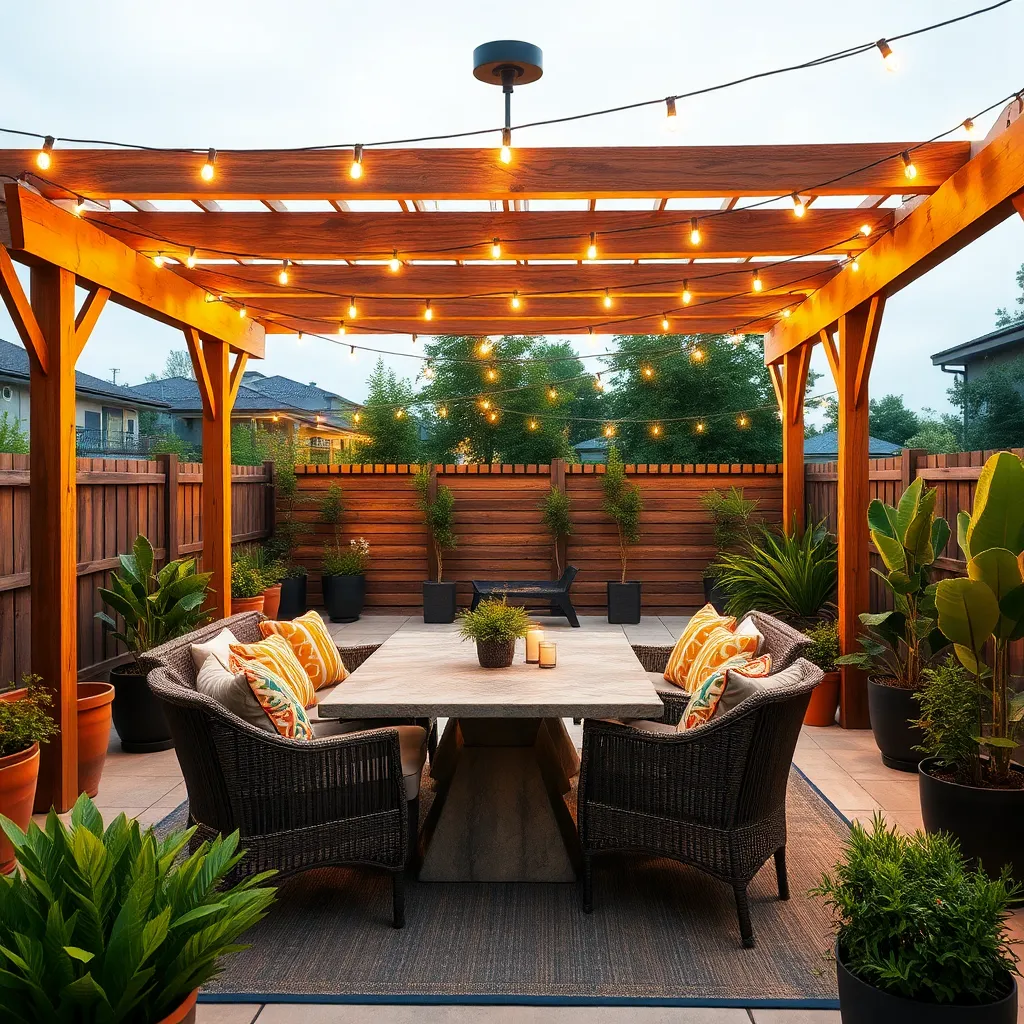
Embedding solar-powered lighting fixtures in your outdoor shelter is a smart way to enhance both functionality and ambiance while keeping energy consumption low. Begin by selecting fixtures that suit your shelter’s design, such as sleek, modern lights for a contemporary pergola or warm, lantern-style options for a rustic gazebo. Placement is key: consider installing lights along pathways, under eaves, or within the structure’s beams to ensure even illumination without overpowering the space.
For a seamless integration, opt for solar fixtures with built-in panels, which eliminate the need for external wiring and make installation straightforward. Ensure your solar panels receive adequate sunlight by positioning them in areas with minimal shade. Advanced tip: To maximize efficiency, regularly clean the panels and check for obstructions. Remember to explore options that offer adjustable brightness levels and automatic timers, giving you control over the lighting mood and energy usage in your outdoor retreat.
Plan for Effective Drainage Systems
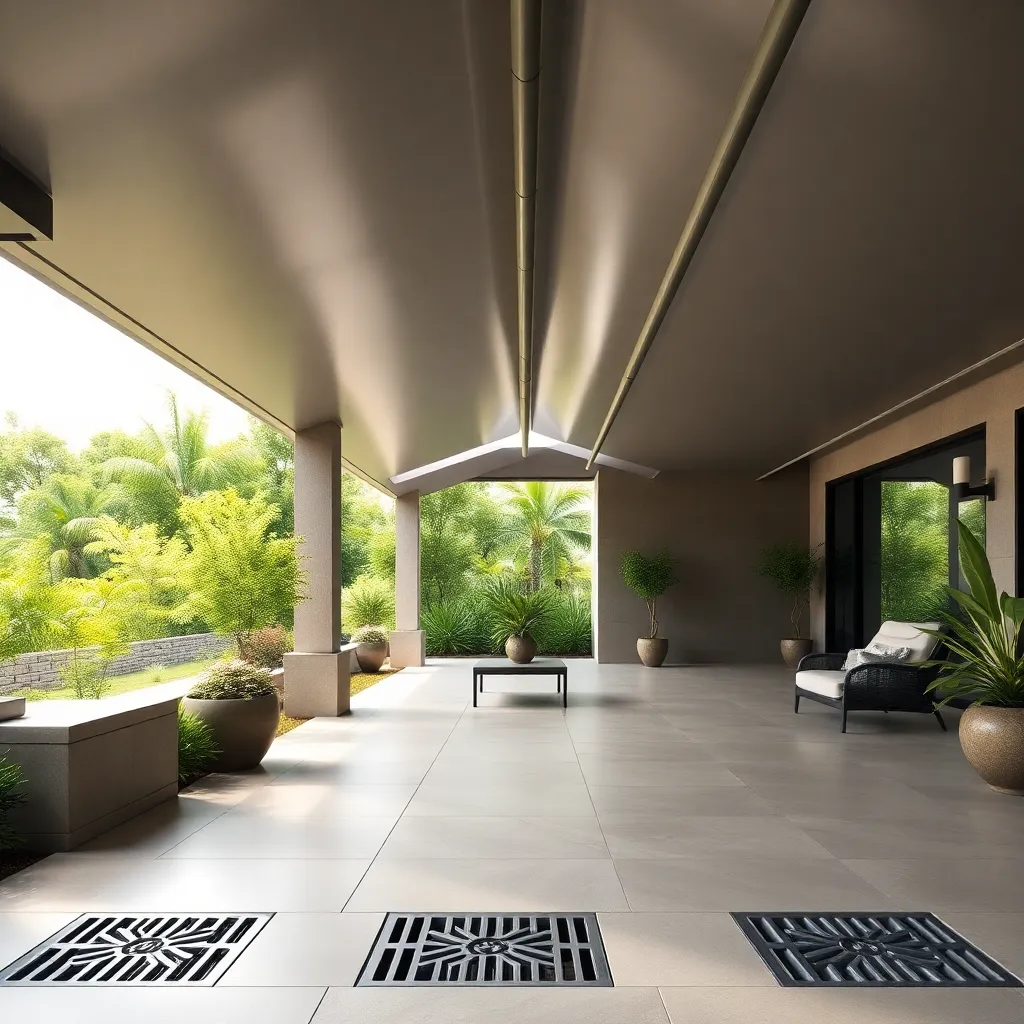
Effective drainage is crucial for maintaining the longevity and comfort of your outdoor shelter. Start by assessing the natural slope of your yard; this will guide water away from your structure. Consider installing a French drain, which is a gravel-filled trench with a perforated pipe that redirects water. This simple yet effective solution can prevent water pooling that might damage your shelter’s foundation.
For those ready to tackle more advanced projects, integrating a rainwater harvesting system can be both environmentally friendly and beneficial for your garden. Install gutters on your shelter’s roof to channel water into a storage container. Use durable materials like PVC for pipes and ensure the slope is sufficient for natural water flow. This not only aids in drainage but also provides a sustainable water source for your gardening needs.
Conclusion: Creating Beautiful Outdoor Spaces
In exploring the ’14 Outdoor Comfort Ideas for Your Next Project,’ we’ve uncovered a treasure trove of insights to enhance your relationships. From creating inviting spaces with cozy seating and ambient lighting, to incorporating nature elements and personalized touches, each concept is a reminder that fostering connections often starts with the environment we share. We’ve also highlighted the importance of versatility and functionality, urging you to design spaces that adapt to the ebb and flow of your relationships.
As a next step, choose one idea that resonates with you and implement it this week. Whether it’s setting up a cozy nook for heart-to-heart talks or planning a garden area for shared activities, take that leap toward enriching your bonds.
To keep these ideas at your fingertips, bookmark this article for future inspiration. As you build these comforting spaces, remember that nurturing your outdoor environment is just the beginning. When you invest in creating meaningful settings, you’re also investing in the success and longevity of your relationships. Embrace this journey with enthusiasm, and watch your relationships bloom into their fullest potential.
